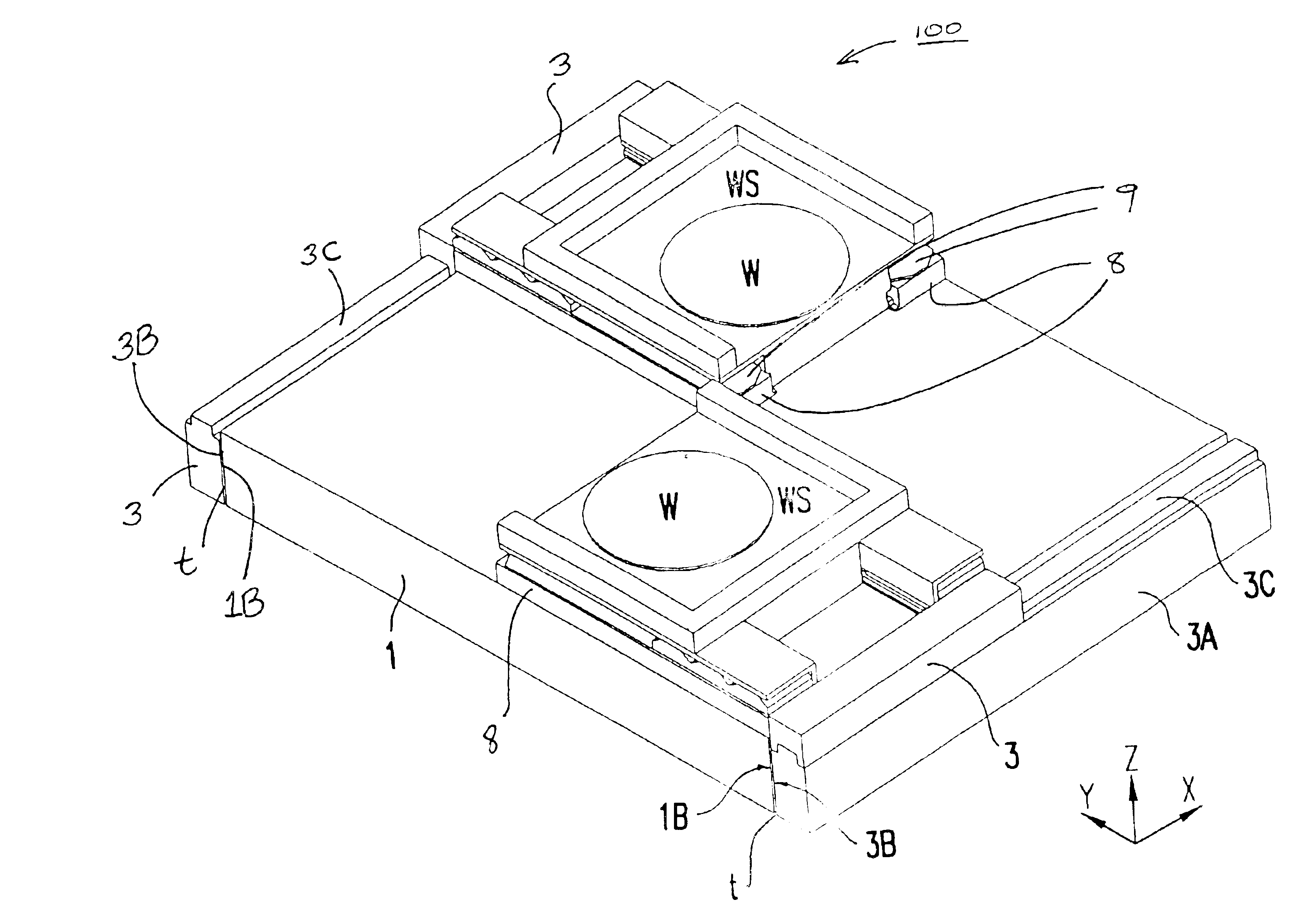Following stage planar motor
a planar motor and following stage technology, applied in the field of two-dimensional electric motors, can solve the problems of affecting the free movement of the coil assembly, affecting the smooth and accurate positioning of the platform of the two-dimensional electric motor, and affecting the timing of the applied current. achieve the effect of large range of motion
- Summary
- Abstract
- Description
- Claims
- Application Information
AI Technical Summary
Benefits of technology
Problems solved by technology
Method used
Image
Examples
Embodiment Construction
[0033]Referring now to the drawings, and more particularly to FIGS. 1 through 4, a motor assembly of an exemplary form in accordance with a preferred embodiment of the invention is shown. FIGS. 1 through 4 show a moving-magnet embodiment.
[0034]The motor assembly shown in FIG. 1 depicts two wafer stages, WS on each of which is respectively positioned wafer W. As shown in FIGS. 1 and 4, the invention allows a lithography machine to use two wafer stages WS to increase throughput. It will be appreciated that the two wafer stages may be the same or different, and that the number of wafer stages is not required to be two, and may be one, three, four, etc.
[0035]In FIGS. 1 and 2, a base 1 is provided. The base 1 is suitable for housing a motor that acts between the base 1 and stage WS to move the stage WS in the “x” direction, such as motor 2 in FIG. 2A. (It will be appreciated that x, y and z directions are labeled on the figures and discussed herein for convenience of reference and easy d...
PUM
| Property | Measurement | Unit |
|---|---|---|
| of wavelength | aaaaa | aaaaa |
| force | aaaaa | aaaaa |
| length | aaaaa | aaaaa |
Abstract
Description
Claims
Application Information
 Login to View More
Login to View More - R&D
- Intellectual Property
- Life Sciences
- Materials
- Tech Scout
- Unparalleled Data Quality
- Higher Quality Content
- 60% Fewer Hallucinations
Browse by: Latest US Patents, China's latest patents, Technical Efficacy Thesaurus, Application Domain, Technology Topic, Popular Technical Reports.
© 2025 PatSnap. All rights reserved.Legal|Privacy policy|Modern Slavery Act Transparency Statement|Sitemap|About US| Contact US: help@patsnap.com



